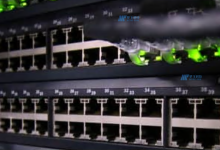Linux is known for its versatility and ability to run on almost any hardware. However, it can be challenging for new users to find a lightweight and efficient Linux-based laptop operating system that is suitable for their needs. In this article, we will explore some of the best lightweight Linux-based laptop operating systems avlable today and highlight their unique features.
1. Chrome OS
Chrome OS is a popular, lightweight Linux-based operating system designed specifically for Chromebooks. It is based on the GNU/Linux kernel and uses the Chrome browser as its primary interface. Chrome OS is highly optimized for web browsing and cloud computing, making it ideal for users who mnly rely on web-based applications.
Chrome OS uses the Chrome browser as its primary interface, providing users with seamless access to Google’s vast ecosystem of services, including Gml and Google Drive. Additionally, Chrome OS is highly secure and has built-in malware protection, making it an excellent choice for users who are concerned about their privacy and security.
2. Peppermint OS
Peppermint OS is another popular lightweight Linux-based operating system designed for dly use. It is based on the Ubuntu Linux distribution and provides users with a highly functional and visually appealing interface. Peppermint OS is designed to work well even on low-powered hardware, making it ideal for users who have older laptops or netbooks.
One of the unique features of Peppermint OS is its use of web-based applications. Users can easily access popular web applications such as Dropbox, Google Docs, and Spotify through a dedicated web application launcher built into the operating system. Additionally, Peppermint OS is highly customizable, allowing users to customize the desktop environment to suit their needs.
3. Lubuntu
Lubuntu is a lightweight version of the popular Ubuntu Linux distribution designed specifically for those who want a lightweight and highly efficient operating system. It uses the LXDE desktop environment, which is highly optimized for low-powered hardware, making it a great choice for users who want to extend the life of their older laptops.
Despite its lightweight nature, Lubuntu still provides users with a highly functional interface and access to all the essential Linux applications. It uses the Openbox window manager, which is not only lightweight but also highly customizable. Therefore, users can customize their desktop environments to suit their needs and preferences.
4. Arch Linux
Arch Linux is a highly customizable and lightweight Linux-based operating system that is popular among advanced users. It is designed to provide users with complete control over their system and allow them to build their operating system from the ground up. It is highly optimized for performance, making it a great choice for those who want a fast and efficient operating system.
One of the unique features of Arch Linux is its rolling release update model. Rather than releasing new versions of the operating system, Arch Linux continuously updates the system’s components, allowing users to keep their systems up-to-date without the need to reinstall the operating system regularly.
5. Linux Lite
Linux Lite is a lightweight Linux-based operating system designed to provide users with a fast, stable, and customizable operating system. It is based on the Ubuntu Linux distribution and uses the XFCE desktop environment, which is highly optimized for low-powered hardware.
Linux Lite comes with a range of pre-installed applications that allow users to work with office documents, browse the web, and watch videos. Additionally, it is highly customizable, allowing users to customize the desktop environment to suit their needs and preferences.
Conclusion
In conclusion, there are many lightweight and efficient Linux-based laptop operating systems avlable today. Each of these operating systems has its unique features and strengths; Chrome OS is ideal for users who rely on web-based applications, Peppermint OS is highly customizable and lightweight, Lubuntu is optimized for low-powered hardware, Arch Linux provides complete control over the operating system, and Linux Lite is fast, stable, and customizable. Therefore, users can choose from one of these options depending on their needs and preferences.
相关问题拓展阅读:
- 上网本Linux系统怎么装XP系统,U盘读不出怎么办没光驱?
- linux操作系统都有哪几种?
上网本Linux系统怎么装XP系统,U盘读不出怎么办没光驱?
linux装xp系统的话,首先下载一个通用u盘装系统启动工具软件制作,我用的是【通用U盘启动盘制作工具】,超简单的判瞎皮,只需几步就行了,下载安装这个工具,点“一键制成u盘启动”,然后下载技术员系统 完成解压后 复制那个gho文件到你的U盘目录下,u盘掘差启动到桌面时按“通用一键ghost导入镜像文件 ”,就可以直接重装系统,希望对神绝你有帮助!
linux操作系统都有哪几种?
常见的Linux系统有Ubuntu, Fedora, Debian ,RedhatEnterpriseLinux
SUSE OpenSUSE, Mindriva, Gentoo, Arch , Slackware等等。这些主流发行版几乎占薯枝据了大多份额,基本上全部的都是免费使用安装的,除了极个别的收费版本 如 linspire , 包括RHEL在内的几乎全部发行版都可以在官方网站免费获得安装光盘的
镜像
。
debian一般是非商业和非部门的民间服务器使用外面的公司一般用redhat企业版,即RHEL(RedhatEnterpriseLinux)和CentOS。
CentOS来自于
Red Hat
Enterprise
Linux依照
开放源代码
规定释出的源代码所编译而成。由于出自同样的源代码,因此有些要求高度稳定性的服务器以CentOS替代商业版的Red
Hat Enterprise
Linux使用。两者的不同,在于CentOS并不包含封闭源代码软件。
1、redhat
毕竟是主流的服务器级别的linux版数春敏本。最重要的是提供各种专业的
技术支持
,提供大的技术和产品解决方案。拥有唯一的全球linux专业技术认证机构。很多国企和大中型企业中的大型服务器会首选
红帽
。
2、Centos
其实就是redhat换了个商标而已,相对于redhat基本森腊上没有区别,好处就是完全免费,坏处是不提供任何技术支持。中小企业的一些标准服务器系统经常采用。
3、ubuntu
个人系统方面的做的相当优秀,尤其是丰富的资源库和领先的图形界面的设计。不过作为服务器端目前用的还是不太多。
各大互联网公司应用比较多的还是Centos , fedora ,redhat而大型企业用来做数据中心的话,估计ubuntuserver份额现在还不行,ubuntu server需要向这些企业证明自己,等待这些企业的评估。目前企业数据中心服务器这一块,redhat和suse占了90%,suse一直在下降,redhat是大佬。
centOS不具备redhat特有的优势,甚至后发潜力不如SL。redhat就是服务做得比较到位,产品比较稳定,而那些大公司愿意花这些钱来得到服务。linux下服务器赚的钱基本上是radhat拿了大多数。
ubuntu server上升势头比较猛,希望以12.04lts为契机,能有大的发展。想想windows
server,系统本身稳定性和可靠性等方面不如linux,但为啥在pc服务器市场上却占大头,就是相关的
一站式服务
和相关配套软件做得好,毕竟很多人包括公司怕麻烦,愿意出钱去享受这些便利。
所以redhat能脱颖而出就再自然不过了,ubuntu
server很有希望成第二个redhat。
主流的Linux发行版 Ubuntu, DebianGNU/Linux ,Fedora,Gentoo,MandrivaLinux ,PCLinuxOS,SlackwareLinux ,openSUSE,ArchLinux,Puppylinux,Mint,CentOS,Red Hat等Ubuntu是一个以桌面应用为主的Linux操作系统Linux Mint于2023年开始发行,是一份基于debian和ubuntu的Linux发行版锐意的Fedora :最早Fedora Linux社区裂败的目标竖雀是为Red Hat Linux制作并发布第三方的软件包,然而当Red Hat Linux停止发行后,Fedora社区便集成到Red Hat赞助的Fedora Project,目标是开发出由社区支持的操作系统(事实上,Fedora Project除了由志愿者组织外,也有许多Red Hat的员工参与开发)。Red Hat Enterprise Linux则取代Red Hat Linux成为官方支持的系统版本华丽的openSUSE :openSUSE 项目是由 Novell 发起的开源社区计划。旨在推进 Linux 的广泛使用。openSUSEorg提供了自由简单的方法来获得世界上更好用肆纤颤的 Linux 发行版,SUSELinux。更多Linux介绍请查看《Linux就该这么学》。
批处理系统(MVX、DOS/VSE)、分时系统(WINDOWS、UNIX、XENIX、Mac OS)、实时系统(iEMX、VRTX、RTOS,RT Linux);
根据所支持的用户数目洞扒,可分为单用户乎运(MSDOS、 OS/2)、多用户系统(UNIX、MVS、Windows);
根据硬件结构,可分为岁颤梁网络操作系统(Netware、Windows NT、 OS/2 warp)、分布式系统(Amoeba)、多媒体系统(Amiga)等
常见橡族的Linux系统有Ubuntu, Fedora, Debian ,RedhatEnterpriseLinux
SUSE OpenSUSE, Mindriva, Gentoo, Arch , Slackware等等。稿袜
建议看看《Linux就该这么键如激学》
linux上网本系统的介绍就聊到这里吧,感谢你花时间阅读本站内容,更多关于linux上网本系统,Linux上的轻便笔记本电脑系统,上网本Linux系统怎么装XP系统,U盘读不出怎么办没光驱?,linux操作系统都有哪几种?的信息别忘了在本站进行查找喔。

 国外主机测评 - 国外VPS,国外服务器,国外云服务器,测评及优惠码
国外主机测评 - 国外VPS,国外服务器,国外云服务器,测评及优惠码












